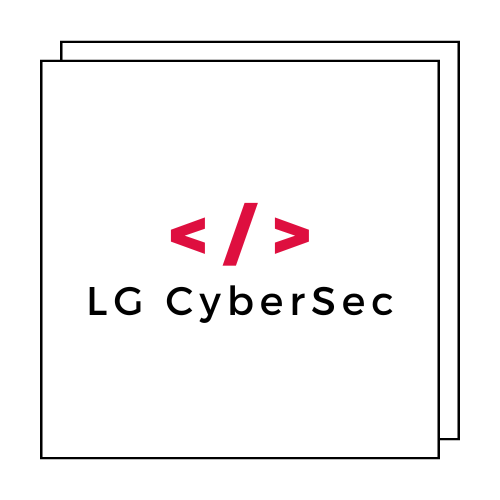In today’s rapidly evolving threat landscape, having a robust incident response plan isn’t just recommended—it’s essential for organizational survival. Following incident response best practices helps you to detect more attacks sooner, stop them faster, prevent escalation more often, keep any damage to a minimum, and recover with less effort. This comprehensive guide will walk you through creating incident response plans tailored to different types of cyber threats.
Understanding the Modern Threat Landscape
Before diving into incident response planning, it’s crucial to understand what you’re up against. Today’s cybercriminals employ sophisticated tactics ranging from social engineering attacks like the recent Cisco CRM breach to advanced ransomware operations that can cripple entire organizations within hours.
The key threats your incident response plan must address include:
- Ransomware attacks – Encrypting critical data and demanding payment
- Data breaches – Unauthorized access to sensitive information
- Insider threats – Malicious or negligent actions by employees
- Supply chain attacks – Compromises through third-party vendors
- Advanced persistent threats (APTs) – Long-term, stealthy intrusions
- DDoS attacks – Overwhelming systems with traffic to cause downtime
The NIST Incident Response Framework: Your Foundation
In April 2025, NIST finalized Special Publication (SP) 800-61 Revision 3, Incident Response Recommendations and Considerations for Cybersecurity Risk Management, providing updated guidance for modern cybersecurity challenges.
According to the National Institute of Standards and Technology (NIST), there are four phases to most effective incident response plans: Preparation; detection and analysis; containment, eradication, and recovery; and post-incident activity.
Phase 1: Preparation – Building Your Foundation
Preparation is where most organizations fail. This phase involves:
Team Assembly and Training
- Establish a dedicated Computer Security Incident Response Team (CSIRT)
- Define clear roles and responsibilities for each team member
- Conduct regular tabletop exercises and simulations
- Provide ongoing cybersecurity awareness training for all employees
Infrastructure and Tools
- Deploy comprehensive security monitoring solutions (SIEM, EDR, NDR)
- Establish secure communication channels for incident coordination
- Create isolated environments for malware analysis
- Implement automated threat detection and response capabilities
Documentation and Procedures
- Develop detailed playbooks for different incident types
- Create contact lists for internal teams, vendors, and external partners
- Establish escalation procedures and decision-making authority
- Document asset inventories and network topology
Phase 2: Detection and Analysis – Identifying the Threat
Rapid detection is critical for minimizing damage. This phase focuses on:
Threat Hunting and Monitoring
- Implement 24/7 security operations center (SOC) capabilities
- Use threat intelligence feeds to identify emerging threats
- Deploy user and entity behavior analytics (UEBA) to detect anomalies
- Establish baseline network activity patterns
Incident Classification
- Develop severity rating systems (Critical, High, Medium, Low)
- Create incident categorization frameworks by threat type
- Establish service level agreements (SLAs) for response times
- Document evidence collection and preservation procedures
Phase 3: Containment, Eradication, and Recovery
This is where your preparation pays off. Effective containment strategies vary by threat type:
Ransomware-Specific Response
- Immediately isolate affected systems from the network
- Preserve system images for forensic analysis
- Assess backup integrity and availability
- Consider FBI reporting requirements for ransomware incidents
Data Breach Response
- Identify the scope and nature of compromised data
- Implement additional access controls and monitoring
- Coordinate with legal teams on regulatory notification requirements
- Prepare breach notification templates for customers and regulators
Business Email Compromise (BEC) Response
- Secure email accounts and reset authentication credentials
- Review and reverse any unauthorized financial transactions
- Implement additional email security controls
- Report incidents to the FBI’s IC3
Phase 4: Post-Incident Activity – Learning and Improving
The most overlooked phase is often the most valuable:
Lessons Learned Sessions
- Conduct thorough post-incident reviews within 30 days
- Document what worked well and areas for improvement
- Update incident response procedures based on findings
- Share lessons learned across the organization
Metrics and Reporting
- Track key performance indicators (KPIs) like mean time to detection (MTTD)
- Measure mean time to containment (MTTC) and recovery (MTTR)
- Report incident trends to executive leadership
- Update risk assessments based on incident data
Tailoring Plans for Specific Threat Types
Ransomware Incident Response Plan
Ransomware attacks require specialized response procedures:
- Immediate Actions (0-1 hours)
- Isolate infected systems from the network
- Identify the ransomware variant using tools like ID Ransomware
- Assess backup systems for integrity and availability
- Notify senior management and legal teams
- Short-term Response (1-24 hours)
- Conduct forensic imaging of affected systems
- Determine the attack vector and timeline
- Assess the scope of encrypted data
- Engage with cyber insurance providers if applicable
- Recovery Phase (1-7 days)
- Rebuild systems from clean backups or images
- Implement additional security controls
- Monitor for persistent threats
- Document lessons learned and update procedures
Data Breach Response Plan
Data breaches require careful coordination with legal and compliance teams:
- Immediate Assessment (0-2 hours)
- Determine the nature and scope of compromised data
- Identify potential regulatory notification requirements
- Preserve evidence for forensic analysis
- Implement additional access controls
- Investigation Phase (2-72 hours)
- Conduct detailed forensic analysis
- Determine the root cause and attack timeline
- Assess potential impact on individuals and the organization
- Prepare regulatory notifications and customer communications
- Notification and Recovery (3-30 days)
- Submit required regulatory notifications within prescribed timeframes
- Notify affected individuals as required by law
- Implement credit monitoring services if appropriate
- Update security controls to prevent similar incidents
Advanced Threat Response Strategies
Supply Chain Attack Response
Supply chain compromises require coordinated response with vendors:
- Immediately assess all third-party connections and access
- Coordinate with affected vendors on containment efforts
- Review and update vendor risk assessment procedures
- Implement additional monitoring for supplier systems
Insider Threat Response
Insider threats require sensitive handling and coordination with HR:
- Preserve evidence while protecting employee rights
- Coordinate with human resources and legal teams
- Implement temporary access restrictions as appropriate
- Document all actions for potential legal proceedings
Building an Incident Response Team Structure
Core Team Roles
Incident Commander
- Overall incident response coordination
- Communication with senior management
- Resource allocation and decision-making authority
Technical Lead
- Technical analysis and containment activities
- Coordination with IT operations teams
- Implementation of technical remediation measures
Communications Manager
- Internal and external communications coordination
- Media relations and public statements
- Customer and stakeholder notifications
Legal and Compliance Officer
- Regulatory notification requirements
- Evidence preservation and handling
- Coordination with law enforcement agencies
Extended Team Members
- Human Resources – For insider threat incidents
- Facilities/Physical Security – For incidents involving physical access
- Third-party Vendors – Security consultants, forensic firms, legal counsel
- Law Enforcement – FBI, local law enforcement, international partners
Technology Stack for Effective Incident Response
Essential Security Tools
Detection and Monitoring
- Security Information and Event Management (SIEM) platforms
- Endpoint Detection and Response (EDR) solutions
- Network Detection and Response (NDR) tools
- Threat intelligence platforms
Analysis and Investigation
- Digital forensics and incident response (DFIR) tools
- Malware analysis sandboxes
- Network traffic analysis platforms
- Log analysis and correlation systems
Communication and Coordination
- Secure messaging platforms for team coordination
- Incident tracking and case management systems
- Video conferencing for remote team coordination
- Emergency notification systems
Regulatory Compliance and Legal Considerations
Key Compliance Frameworks
Industry-Specific Requirements
- HIPAA for healthcare organizations
- PCI DSS for payment card processors
- SOX for publicly traded companies
- FERPA for educational institutions
Regional Data Protection Laws
- GDPR for European operations
- CCPA for California businesses
- State breach notification laws across all US states
- Emerging international data protection regulations
Law Enforcement Coordination
Working with law enforcement requires careful planning:
- Establish relationships with local FBI field offices before incidents occur
- Understand when to involve CISA for critical infrastructure
- Prepare for potential evidence seizure and business disruption
- Document chain of custody procedures for digital evidence
Testing and Continuous Improvement
Regular Testing Programs
Tabletop Exercises
- Quarterly scenario-based discussions
- Cross-functional team participation
- Documentation of gaps and improvement areas
- Executive leadership involvement
Technical Simulations
- Annual penetration testing with incident response elements
- Red team exercises testing detection and response capabilities
- Automated testing of security controls and procedures
- Recovery time objective (RTO) validation testing
Metrics and Key Performance Indicators
Detection Metrics
- Mean Time to Detection (MTTD)
- False positive rates for security alerts
- Coverage of detection rules and signatures
- Threat hunting effectiveness measures
Response Metrics
- Mean Time to Containment (MTTC)
- Mean Time to Recovery (MTTR)
- Incident escalation accuracy
- Stakeholder communication timeliness
Common Pitfalls and How to Avoid Them
Preparation Failures
Insufficient Training Many organizations conduct initial incident response training but fail to maintain skills through regular practice. Combat this by implementing quarterly tabletop exercises and annual full-scale simulations.
Outdated Contact Information Nothing derails an incident response faster than trying to reach team members with outdated contact information. Maintain current contact lists and test communication procedures monthly.
Inadequate Documentation Generic incident response plans that don’t reflect your specific environment are worse than no plan at all. Customize playbooks for your organization’s technology stack, business processes, and regulatory requirements.
Response Execution Problems
Communication Breakdowns Establish clear communication protocols and backup methods. Use secure, out-of-band communication channels that won’t be affected by the incident.
Evidence Destruction Train all staff on evidence preservation procedures. Many well-intentioned IT staff have inadvertently destroyed evidence by “fixing” problems before proper forensic procedures were followed.
Premature Public Disclosure Coordinate all external communications through designated spokespersons. Premature or inaccurate public statements can have lasting legal and reputational consequences.
Building a Culture of Incident Preparedness
Executive Leadership Engagement
Senior leadership must champion incident response preparedness:
- Participate in tabletop exercises and simulations
- Provide adequate budget for security tools and staffing
- Support regular security awareness training programs
- Communicate the importance of security to all employees
Employee Awareness and Training
Every employee is part of your incident response capability:
- Provide regular phishing simulation and training
- Establish clear reporting procedures for suspicious activity
- Reward employees who identify and report potential incidents
- Create a blame-free culture that encourages reporting
Future-Proofing Your Incident Response Plan
Emerging Threats and Technologies
Stay ahead of evolving threats by:
- Monitoring threat intelligence sources for emerging attack techniques
- Participating in industry information sharing groups
- Investing in artificial intelligence and machine learning for threat detection
- Preparing for attacks on cloud infrastructure and remote work environments
Regulatory Evolution
Keep pace with changing regulatory requirements:
- Monitor proposed legislation and regulations
- Participate in industry working groups and standards development
- Engage with legal counsel on compliance interpretation
- Update procedures as new requirements take effect
Conclusion: Your Path to Incident Response Excellence
Creating an effective incident response plan is not a one-time activity—it’s an ongoing process that requires continuous refinement and improvement. By following the NIST framework, tailoring your approach to specific threats, and maintaining a culture of preparedness, your organization can minimize the impact of cyber incidents and recover quickly when they occur.
Remember that the best incident response plan is one that’s been tested, refined, and practiced regularly. Start with the basics, build your capabilities over time, and never stop learning from each incident you encounter.
The cyber threat landscape will continue to evolve, but organizations with well-prepared incident response capabilities will be better positioned to detect, contain, and recover from whatever threats emerge. Invest in your incident response capabilities today—your organization’s future depends on it.
Essential Resources:

